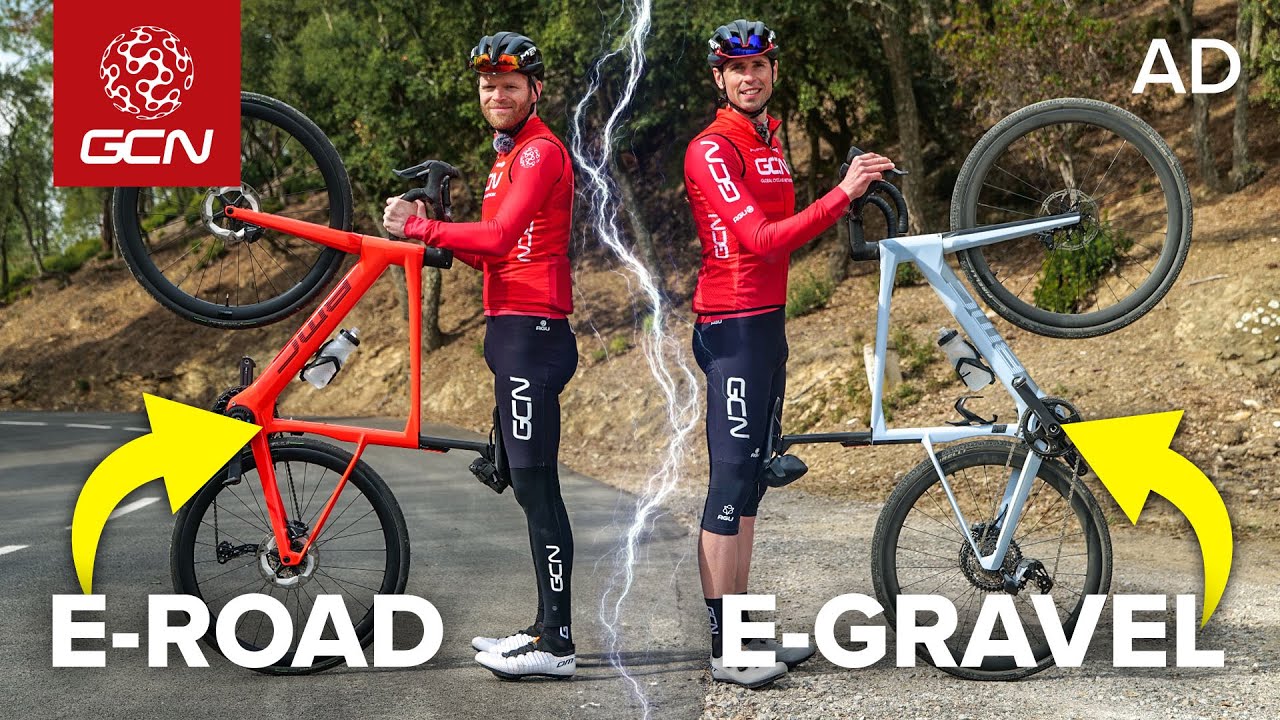Which Is The BEST E-Bike? | eRoad vs eGravel with GCN
Source: GCN Youtube Channel: Which Is The BEST E-Bike? | eRoad vs eGravel
Video Which Is The BEST E-Bike? | eRoad vs eGravel with Global Cycling Network
Video Which Is The BEST E-Bike? | eRoad vs eGravel with Global Cycling Network YouTube Channel.
Which Is The BEST E-Bike? | eRoad vs eGravel
Global Cycling Network: Exploring the Differences Between E-Road and E-Gravel Bikes
When it comes to choosing between an e-road bike and an e-gravel bike, cyclists are faced with a decision that can greatly impact their riding experience. The Global Cycling Network sets out to explore the unique characteristics of each type of ebike, highlighting their strengths and weaknesses to help riders make an informed choice. Before delving into the specifics of e-road and e-gravel bikes, it is crucial to consider the type of motor system used, as it plays a significant role in the overall performance and feel of the bike.
The choice between hub-based and mid-based motor systems can greatly influence the ride quality of an ebike. Hub-based motors, typically mounted on the rear wheel, are less expensive and less powerful than mid-mounted motors. While hub-based motors are easier to install and may provide a cost-effective option for some riders, mid-mounted motors offer a more natural ride feeling due to their central and low placement on the bike. This positioning contributes to improved handling and a smoother overall riding experience.
For riders seeking a versatile ebike that can handle both on and off-road terrains, the choice between an e-road bike and an e-gravel bike becomes crucial. E-gravel bikes offer the advantage of exploring gravel tracks and off-road paths, providing riders with the freedom to venture beyond traditional paved roads. The versatility of e-gravel bikes allows for customization in terms of wheel and tire setups, making them suitable for a variety of riding conditions. On the other hand, e-road bikes are designed for smoother road surfaces, offering a more streamlined and efficient ride experience.
The geometry of e-road and e-gravel bikes also plays a significant role in their performance and handling characteristics. While e-road bikes are optimized for aerodynamic road riding positions, e-gravel bikes typically feature a slightly shorter and higher front end, along with a longer wheelbase and slacker head tube angle for added stability on rough terrain. These design differences contribute to the overall agility and comfort of each type of ebike, catering to the specific needs and preferences of riders.
Weight is another key factor to consider when choosing between e-road and e-gravel bikes. While both types of ebikes are heavier than traditional bikes, the weight distribution and overall mass can vary between models. E-road bikes tend to be lighter than e-gravel bikes, which may impact acceleration, handling, and overall range. Finding the right balance between weight and performance is essential for maximizing the riding experience and ensuring a comfortable and efficient ride.
The range of an ebike is influenced by various factors, including the level of assist chosen and the rolling resistance of the tires. With different levels of assistance available, riders can adjust the power output to suit their specific riding needs and preferences. TQ Motors provides real-life data on the range of their ebike systems, demonstrating how varying levels of assist can impact the overall distance and elevation covered during a ride. Additionally, the choice of tires can significantly affect the range of an ebike, with slick tires offering greater efficiency on smooth surfaces compared to gravel-specific treads.
In terms of ride feel, the engineering and design of the motor system play a crucial role in delivering a smooth and natural riding experience. TQ Motors, with their background in robotics and electric motors, have developed the Harmonic Pin Ring transmission (HPR) system, which enhances the efficiency and responsiveness of their ebike motors. The software and electrical controls of the motor system can be customized through the TQ app, allowing riders to fine-tune the power delivery and responsiveness of their ebikes according to their preferences.
Ultimately, the choice between an e-road bike and an e-gravel bike boils down to personal riding style, terrain preferences, and desired features. While e-road bikes excel on smooth roads and offer a streamlined riding experience, e-gravel bikes provide the versatility to explore off-road trails and gravel paths. By considering the motor system, geometry, weight, range, and ride feel of each type of ebike, cyclists can make an informed decision that aligns with their riding goals and preferences.
In conclusion, the Global Cycling Network highlights the key differences between e-road and e-gravel bikes, offering insights into the unique characteristics and advantages of each type of ebike. Whether riders prioritize speed and efficiency on paved roads or seek adventure on gravel tracks and off-road paths, the choice between an e-road bike and an e-gravel bike is a personal decision that can greatly enhance the riding experience. By understanding the nuances of each type of ebike and considering important factors such as motor system, geometry, weight, range, and ride feel, cyclists can select the perfect companion for their cycling adventures.
The opinions expressed in this space are the sole responsibility of the YouTube Channel Global Cycling Network and do not necessarily represent the views of CicloNews.










